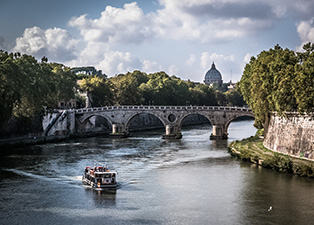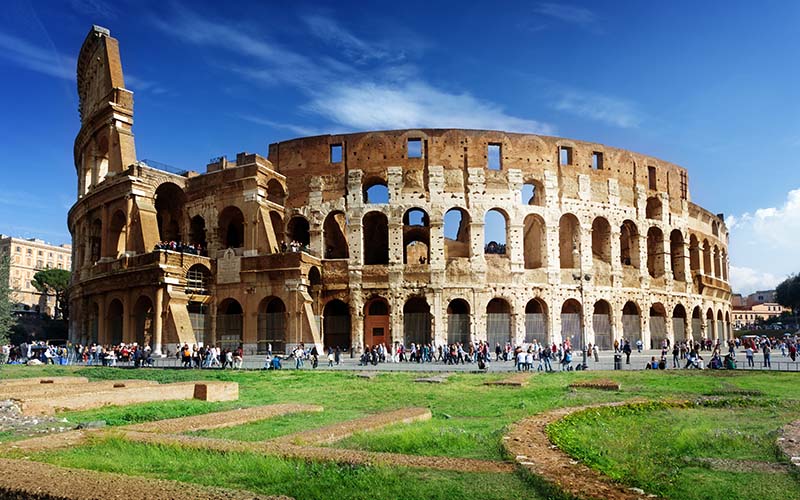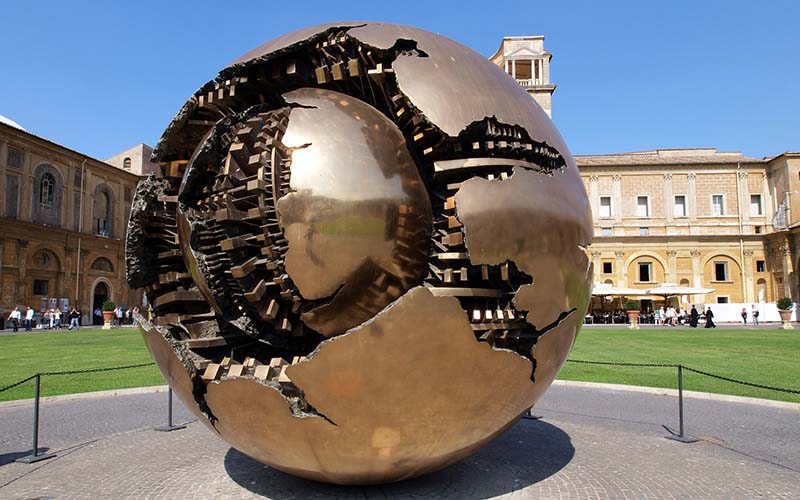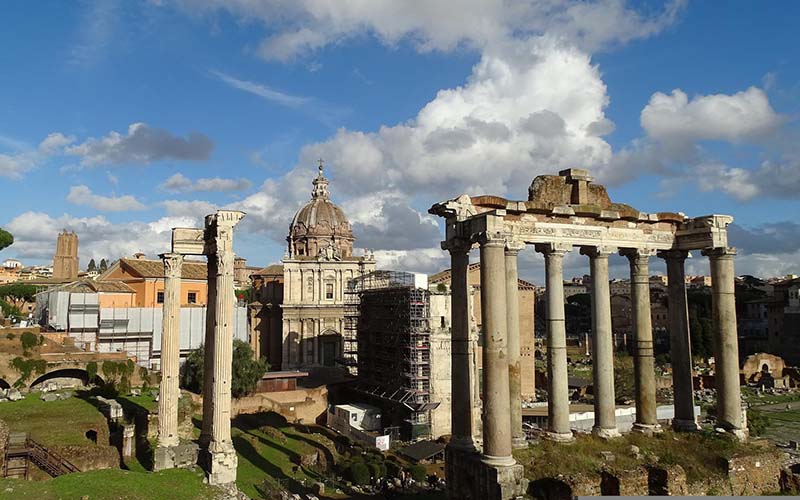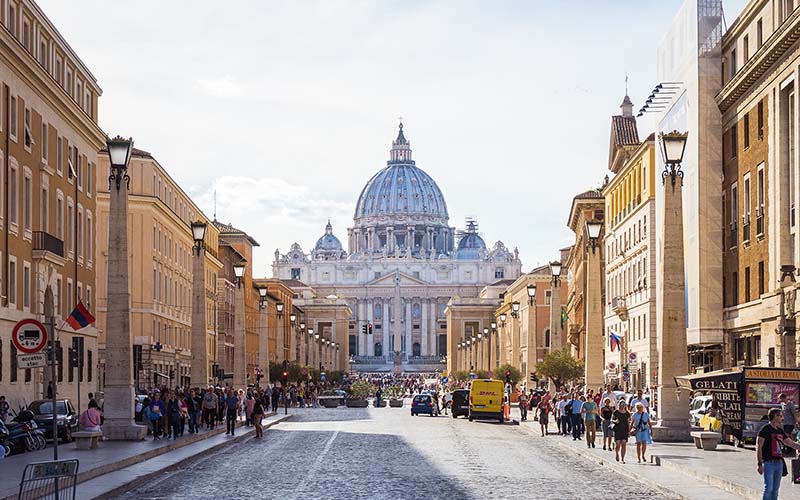Italy’s fiery capital is one of the world’s most seductive and fascinating towns, thanks to its intoxicating blend of melancholy ruins, awe-inspiring art, and vibrant street life.
Historical Significance of Rome
Rome’s cityscape is breathtaking since it resulted from 3000 years of haphazard urban development. The city’s enormous basilicas and ancient landmarks like the Colosseum and the Roman Forum evoke Rome’s time as the Catholic Church’s seat and the city’s caput mundi (capital of the world). St. Peter’s Basilica, a testament to the ambition of Rome’s Renaissance popes and the ingenuity of its game-changing architects, soars over the Vatican and commands a commanding view of the city. The baroque elegance of its piazzas and fountains further enhances the city’s charming streets.
Priceless Works of Art in Rome
The cultural wealth of Rome is unparalleled. The city has been at the center of several major artistic movements in Western culture, attracting the best minds and encouraging them to break new ground. As a result, the city is flooded with irreplaceable artifacts. There are Byzantine mosaics, Renaissance frescoes that sparkle in the churches, and baroque facades surrounding the medieval piazzas. The center is filled with works by some of the greatest artists in European history, including sculptures by Michelangelo, paintings by Caravaggio, frescoes by Raphael, and fountains by Bernini.
Here I Am, Living the Dream- Rome
Enjoying the art and culture of Rome is essential, but so is soaking up the city’s famous “dolce vita” atmosphere. Central to the Roman experience are the opportunities to meander through charming alleys while away the hours at sidewalk cafes and people-watch in lovely piazzas. Evenings pick up the pace when trendy drinkers flock to the city’s pubs and restaurants for a convivial aperitivo (drink with nibbles), and the trattorias buzz with bustle. In other areas, happy crowds congregate at tourist hotspots before dispersing to the city’s most happening cocktail lounges and nightclubs.
Suggested Read: The Leaning Tower Of Pisa – All You Should Know
Celebration in Rome
Romantic outdoor settings and excellent cuisine make dining out in Rome one of the city’s most rewarding experiences. There is no shortage of elegant restaurants serving modern cuisine and five-star wine. Still, for a taste of authentic Roman cuisine, you should visit a lively pizza or hospitable neighborhood trattoria. Locals go there to satisfy their cravings for the region’s signature thin, crispy pizzas, simple pasta meals, and refreshing white wines from the surrounding Castelli Romani hills. The perfect ending is a scoop of gelato and a strong cup of coffee that can compete with the best in the world.
Vatican Museums, Rome
The Vatican Museums have one of the world’s most significant art collections; they were established by Pope Julius (II) in the early sixteenth century AD and expanded by subsequent popes. Antique Egyptian mummies and Etruscan bronzes sit alongside ancient busts, old masters, and contemporary artworks in the museum’s over 4 kilometers of hallways and corridors. The collection in the Museo Pio-Clementino, the Raphael Rooms, and the Sistine Chapel are just a few of the city’s many must-sees.
The museums are located in the Palazzo Apostolico Vaticano, home to elaborately adorned halls and galleries. The old Vatican palace, located closer to Saint Peter’s Basilica, and the Palazzetto di Belvedere, built in the 15th century, make up this massive 13.6-acre complex, connected by two long corridors. Three inner courtyards exist the Cortile della Pigna, the Cortile della Biblioteca, and the Cortile del Belvedere to the south. It is best to prioritize what you want to learn because you can’t possibly know everything in a single day.
You might be interested – Italy in April | Italy in May
Roman Forum
Ancient Rome’s spectacular neighborhood of temples, basilicas, and lively public spaces, the Roman Forum, is an astounding, somewhat bewildering, sprawl of ruins. After its initial development in the seventh century BCE, the once-marshy burial place eventually became the political, economic, and cultural center of the Roman Empire.
There’s a magical allure to following in the footsteps of Julius Caesar and other significant figures from Roman history, provided you can get your mind working. The Curia, the Temple of Saturn (Tempio di Saturno), the Arco di Tito, and the Arch of Septimius Severus are among the city’s most recognizable landmarks.
History
The Roman Forum served as the city’s epicenter, hosting everything from political debates to gladiatorial contests to public festivals. The streets and lanes were dotted with stalls and shops. The Forum was the location of the city’s most impressive temples and buildings during the Roman Empire.
Like many of Rome’s other great urban projects, the Forum was left to deteriorate following the fall of the Roman Empire and was finally repurposed as pasture land. During the Middle Ages, it was often referred to as the Campo Vaccino (Cow Field), and it was heavily looted for its stone and marble. Systematic excavations began in the area in the 18th and 19th centuries and are still ongoing.
Learning about the history of the Roman Forum
Following Via Sacra to Campidoglio
When you arrive from Largo della Salara Vecchia (other entrances are on the Palatino and by the Arco di Tito), the Tempio di Antonino e Faustina will be straight in front of you on the left. Built-in 141 CE, the Chiesa di San Lorenzo in Miranda was converted into a church in the 8th century. The Basilica Fulvia Aemilia, built-in 179 BCE, was a 100 m (328 ft) long public hall with a two-story porticoed facade.
The path terminates with the main street of the Forum, Via Sacra, and the Tempio di Giulio Cesare (also known as the Tempio del Divo Giulio). This structure, constructed by Augustus in 29 BCE, stands on the site where Caesar was cremated after his death in 44 BCE.
The Curia, the first home of the Roman Senate, can be found by continuing straight along Via Sacra. This structure, which once resembled a barn, underwent multiple reconstructions before being transformed into a church throughout the Middle Ages. Currently standing is a 1937 replica of how it would have looked during Diocletian’s rule (r 284–305).
The Curia is surrounded by scaffolding to protect the Lapis Niger, a massive slab of black marble that is believed to cover the tomb of Romulus.
R. Roscioli, Rimessa
Rimessa is a branch of the prestigious Roscioli empire that caters specifically to vino connoisseurs. The shelves are stocked with excellent wines from around Italy and the world, and the helpful wait staff is well-versed in their specialty. Roman cuisine (Cucina Romana) is just as unique, significantly, when updated to reflect today’s tastes. Indulge in a curated wine and cuisine tasting or order from the menu.
The DiVino Spirit
Eliana Catalani is a chef and a devotee of the Slow Food movement. Therefore, she sources her supplies from nearby farms and businesses. Maiale Alla Azio, a stew made with pork and red wine that is centuries old and was reportedly a favorite of Caesar, is the namesake dish of the eatery. In between dishes, customers can explore the wine cellar, which was built in 80 BC. Look at the historic columns on the side facade, which bear ancient Hebrew writing.
There are faded Hebrew inscriptions on the pillars of the Vicolo dell’Athleta entryway, indicating that the restaurant’s upper level was previously a synagogue dating back to the 10th century.
Olympic Stadium
Seeing the magnificent Stadio Olimpico in Rome is a once-in-a-lifetime opportunity to gain insight into the city’s passion for sports. The city’s two Serie A teams, Roma and Lazio, play every Sunday from late August until early May. The town also hosts Italy’s home games in the Six Nations rugby competition in February and March.
Depending on the match, tickets start at €25. They can be purchased via any Lottomatica (lottery center), the stadium, ticket agencies, or one of the many Roma or Lazio outlets throughout the city.
Alexanderplatz
The best jazz in Rome may be found at the most famous jazz club in Rome, a small, underground club that can only be accessed through a hidden black door near a corner. Make a pre-booking if you want to dine here or see the show, but remember that the music is the main attraction. The show starts at 9:45 p.m.
Paciotti
Family-owned and operated, this deli is a culinary wonderland of all things Italian. The dozens hang prosciutto hams. Bubble-wrapped and vacuum-sealed cheeses, olive oil, dried pasta, balsamic vinegar, wine, and truffle patés line the shelves. Antonio Paciotti, the patriarch, and his three friendly sons happily assist clients in Italian and English.
Fendi
The Rome flagship of the famous fashion business is housed in the 18th-century Palazzo Fendi, and it is a sight to behold with its travertine walls, beautiful modern art, and grand red-marble staircase. This opulent concept store and Maison on Via del Plebiscit, which began as a leather and fur workshop in 1925, now sells men’s and women’s ready-to-wear.
Fendi’s distinctive leather and fur are featured in the clothing line. The 2016 redesign brought to the flagship shop a glitzy Japanese restaurant and cocktail terrace bar on the top level, as well as a plush apartment on the second floor for hosting VIPs.
Though the eternal city offers a lot more, we have curated a short list to maximize the user experience.
Suggested Read: The Best Places and Cities to Visit in Italy
